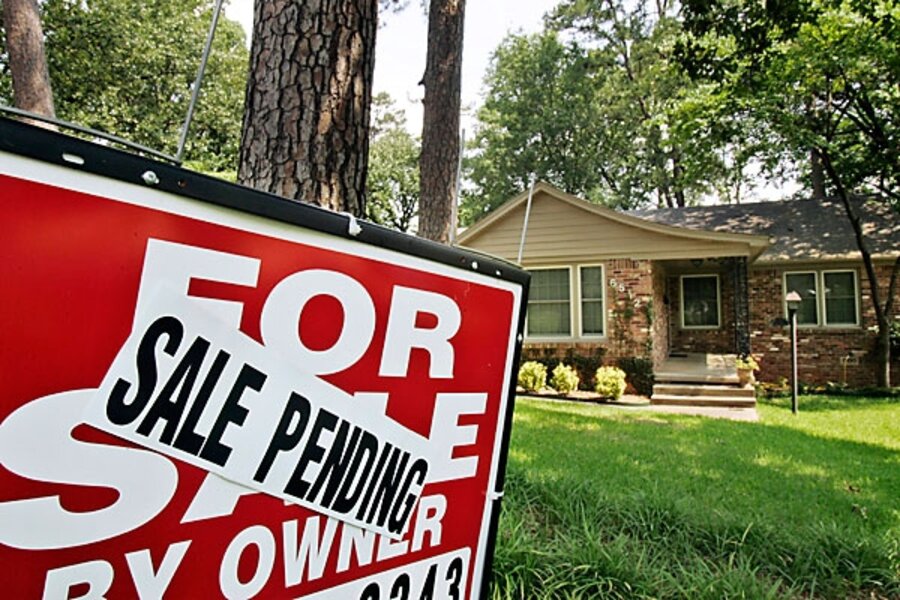Brace yourself: Interest rates likely to climb higher
Loading...
Surging interest rates are making it harder for Americans to get mortgage deals, and set the stage for taxpayers to pay higher fees on a soaring federal debt.
What's happening is a full-fledged bear market in Treasury bonds, as investors become more optimistic about the economy. They're buying more stocks and less government debt, a trend that pushes up government borrowing rates.
The interest rate on a 10-year Treasury note has gone from 2.93 percent in April to 3.68 percent Monday. That's an extraordinary surge in just a few weeks.
Mortgage rates, which are often tied directly to the direction of US Treasury bonds, are also heading upward, at a time when many households would like to refinance their loans to save money.
"I would suspect that the move up in bond yields will continue into next year," says Michael Cosgrove, a Dallas economist who publishes the EconoClast, a market newsletter. "In particular, the home mortgage market is the one that will be impacted."
New mortgages and refinancing activity won't dry up, but they would be constrained by the rising costs. This could be a challenge for a housing market that's trying to find its feet.
The government, meanwhile, will still borrow a lot but faces a rising tab. Mr. Cosgrove forecasts that the Treasury's borrowing cost on 10-year notes will rise over the next 12 months to 4.5 percent.
At a time when the government is running record budget deficits – borrowing perhaps $2 trillion in each of the next two years – that would add big extra costs on taxpayers.
As a rough guide to the impact, consider this: If the current $7 trillion in federal debt held by the public were refinanced by issuing new 10-year notes, the jump in interest rates that has occurred since April would add about $50 billion in annual costs to taxpayers.
Of course, not all the government debt needs to be refinanced at a single time, and forecasters have differing views on how high interest rates will go. But few see rates staying at the historic lows they reached in recent months.
Increased optimism a factor
Cosgrove points to two main reasons for the recent jump in interest rates.
"One is that the fear factor is starting to fade from the global economy," he says. The other "is simply the huge supply of Treasury debt coming on the market."
The first factor is good news. As fears of a financial-industry meltdown have receded, investors have become more willing to hold risky assets. They are pulling money out of safe Treasury bonds and putting them back into stocks. US stock prices are up more than 30 percent, on average, in the past three months.
According to data tracked by the Federal Reserve Bank of St. Louis, Treasury interest rates are back up where they were a year ago, though still well below 2007 levels. (Interest rates on bonds move in the opposite direction to bond prices.)
The second factor, the rising supply of bonds, points to a longer-term concern. The government debt is fasting rising toward a level equal to a year's gross domestic product for the nation. That's often viewed as a danger zone, where lenders demand higher interest because the risk of default is rising.
Some analysts worry that the result will be inflationary policies, as the Federal Reserve tries to keep a debt-bloated economy afloat.
Once clear signs emerge that the recession is ending, the Fed may have to reassert its determination to maintain stable price levels in the economy. If the Fed does this successfully it could have a calming effect on interest rates. By raising the short-term interest rate that it sets for banks, the Fed could actually thus stabilize private-sector interest rates, Cosgrove says.
Even if the Fed does its job perfectly, the White House and Congress will need to figure out how to put the nation's fiscal house in order. The threat of rising debt and rising borrowing costs could prompt the Obama administration to raise taxes.
In Beijing this week, Treasury Secretary Timothy Geithner assured Chinese leaders that the Obama administration is committed to taming the US budget deficits. Chinese Premier Wen Jiabao roiled financial markets in March when he expressed concern about the safety of China's holdings of US government debt.
Pressure on mortgage rates
Meanwhile, the Fed also has a near-term policy challenge. It has been buying mortgage-related bonds in an effort to heal the housing market. Now, with private bond markets putting upward pressure on interest rates, the Fed has to decide how far it can push its strategy.
The average rate for a 30-year fixed mortgage is back at 4.91 percent this week, up from 4.82 percent last week, mortgage giant Freddie Mac said Thursday.
Low rates, aided by the Fed's buying of bonds, led to a surge in mortgage applications.
Applications rose for five straight weeks between early March and early April, according to the Mortgage Bankers Association. And sales of both existing and new homes ticked higher from March to April, according to data released this week.
But now the Fed and private investors are pulling in opposite directions. If that persists, the Fed won't be able to outweigh other players in the bond market.
• Material from the Associated Press was used in this story.





